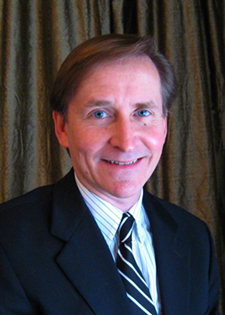
Peter Garnavich, professor of physics at the University of Notre Dame, is co-investigator on the largest Hubble project ever undertaken, one that will watch galaxies form and hunt for distant explosions. Astronomers will peer deep into the universe in five directions to document the early history of star formation, galaxy evolution and find distant supernova explosions in the ambitious new project, which will require an unprecedented amount of time on the Hubble Space Telescope.
“The new instruments installed and ones repaired by astronauts last year have made this investigation possible; it is like having a new, even bigger telescope,” Garnavich said.
By imaging more than 250,000 distant galaxies, the project will provide the first comprehensive view of the structure and assembly of galaxies over the first third of cosmic time. It also will yield crucial data on the earliest stages in the formation of supermassive black holes and find distant supernovae important for understanding dark energy and the accelerating expansion of the universe.
The project is led jointly by Henry Ferguson of the Space Telescope Science Institute and Sandra Faber of the University of California, Santa Cruz. The effort relies on Hubble’s powerful new infrared camera, the Wide Field Camera 3 (WFC3), as well as the telescope’s repaired Advanced Camera for Surveys (ACS).
The program, which brings together a large international team of collaborators, was awarded a record 902 orbits of observing time as one of three large-scale projects chosen for the Hubble Multi-Cycle Treasury Program. It takes Hubble 97 minutes to make one orbit, so observing time totals about two months but will be spread out over the next two to three years.
A powerful telescope like Hubble allows astronomers to see back in time as it gathers light that has traveled for billions of years across the universe. The new survey is designed to observe galaxies at distances that correspond to “look-back times” from 9 billion years ago to about 13 billion years in the past, or only about 600,000 years after the Big Bang. Of all the stars in the universe, only about 1 percent had formed at the time of the most distant epoch included in the survey.
The new data will be used to answer many key questions about galaxy evolution and cosmology. By studying how galaxy masses, morphologies and star formation rates changed over time, researchers can test theories of galaxy formation and evolution.
Another important component of the project is the search for distant examples of a particular type of exploding star known as a Type Ia supernova.
Astronomers have used the uniform brightness of these supernovae to measure cosmic distances, leading to the conclusion that a mysterious force called dark energy is accelerating the expansion of the universe. Observations of distant Type Ia supernovae will enable researchers to study how the rate of expansion of the universe has changed over time.
Garnavich was on one of the two teams that first discovered the accelerating universe back in 1998.
“In these deep Hubble observations we should find a handful of very distant supernovae that exploded before cosmic acceleration started,” Garnavich said. “This will be a great test of whether we really understand what the supernovae are telling us.”
Data from this project will be made available to the entire astronomy community with no proprietary period.
“The idea is to provide a unique and large data set that could not have been built by adding together many small projects,” Garnavich said. “These Multi-Cycle
Treasury program images will be used by anyone trying to understand how galaxies were put together.”
Additional information about the project is available at the Space Telescope Web site.
Contact: Peter Garnavich, professor of physics, 574-707-2528 (cell), pgarnavi@nd.edu